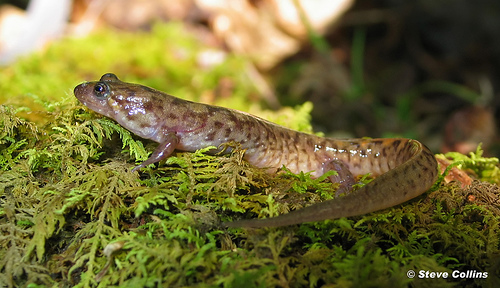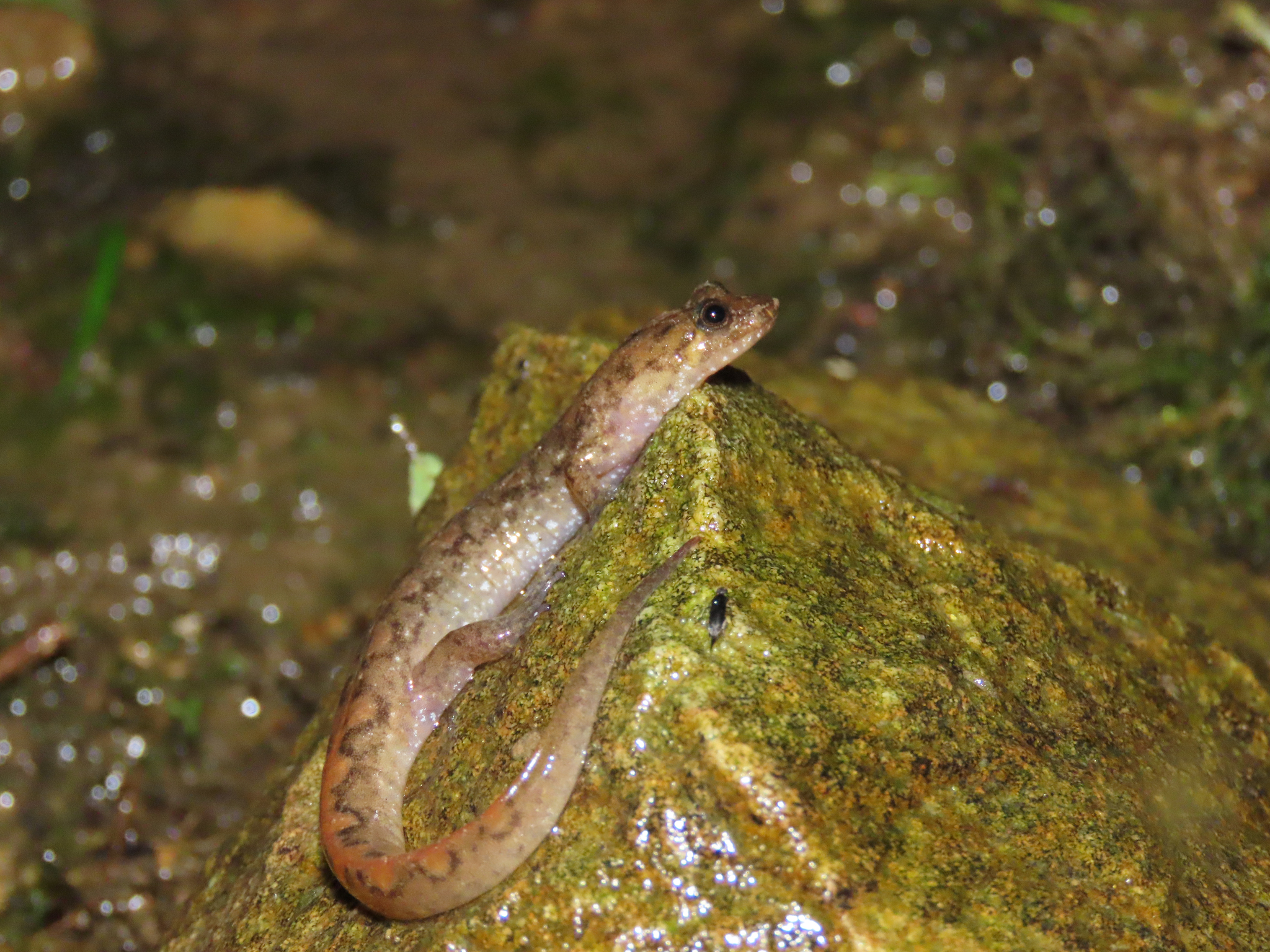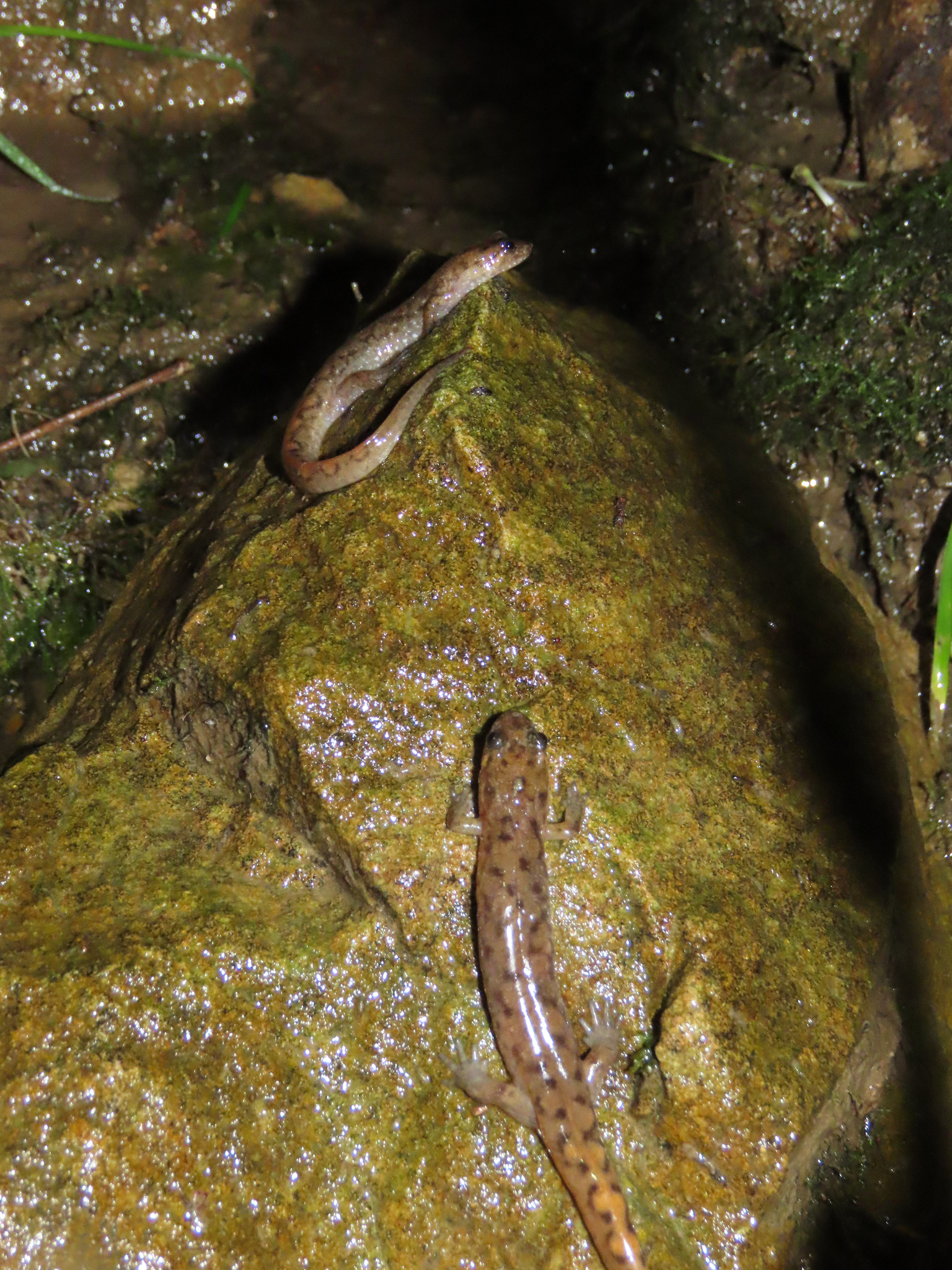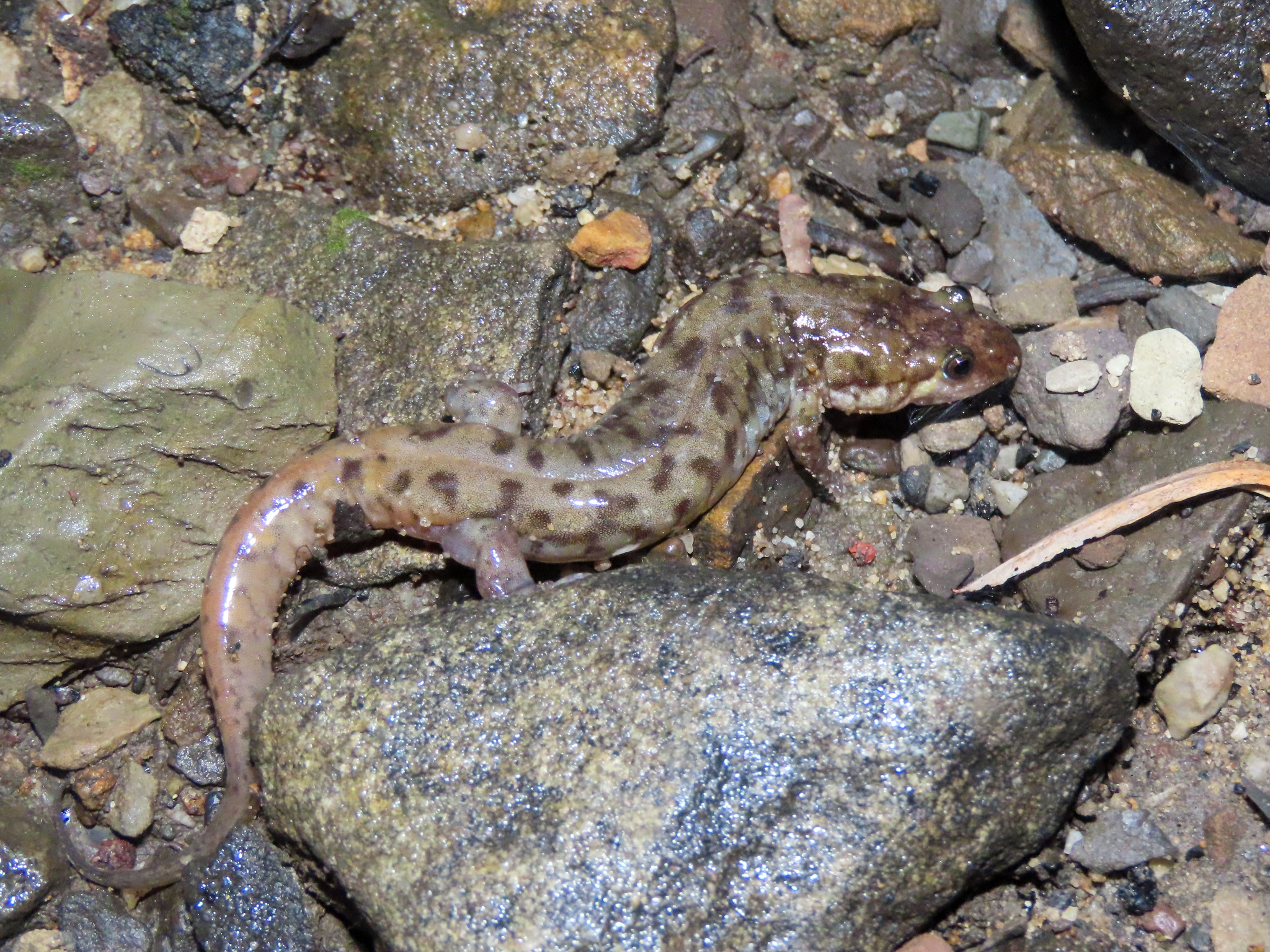Map Snapshot



168 Records
Status
Seal Salamander (Desmognathus monticola) is a stout, heavy-bodied Desmognathus, with bulging eyes and a keeled tail. The oddly robust, portly shape is said to be reminiscent of a seal. As with other members of the genus, coloration is extremely variable. Generally strongly-marked, this species also shows a strongly-demarcated pale belly. Seal Salamanders in Maryland are restricted to in Garrett and Allegany Counties, where they inhabit banks of cool, well-oxygenated streams. They spend the day resting in burrows, and are primarily nocturnal (Conant & Collins, 1998; Maryland DNR site). This salamander breeds from autumn into early spring.
Seasonality Snapshot
Source: Wikipedia
| Seal salamander | |
|---|---|

| |
| Scientific classification | |
| Domain: | Eukaryota |
| Kingdom: | Animalia |
| Phylum: | Chordata |
| Class: | Amphibia |
| Order: | Urodela |
| Family: | Plethodontidae |
| Subfamily: | Plethodontinae |
| Genus: | Desmognathus |
| Species: | D. monticola
|
| Binomial name | |
| Desmognathus monticola Dunn, 1916
| |
| Synonyms[2] | |
| |
The seal salamander (Desmognathus monticola) is a species of lungless salamander that is endemic to the Eastern United States.[2]
Distribution and habitat
[edit]The seal salamander can be found from southwestern Pennsylvania and south through Appalachian Mountains areas of high elevation in West Virginia, western Maryland, western and northern Virginia, eastern Kentucky, western North Carolina, eastern Tennessee, western South Carolina, and northern Georgia to central Alabama. There are also disjunctive populations in southern Alabama as well as at the very western end of the Florida panhandle. In the north of its range, it has not been observed north or west of the Ohio River.[1]
An introduced population is present in Benton County, Arkansas.[3][4]
Its habitat includes rocky mountain streams, spring-fed brooks in the ravines of deciduous forests, muddy sections of streams and seepages. The total adult population size of the species is assumed to exceed 100,000.[1]
Etymology
[edit]The genus name Desmognathus refers to the characteristic bundle of ligaments that connect to the jaw in this species group.[5] The comes from the Greek words desmos, which means "ligament," and gnathos which means "jaw". The specific epithet monticola comes from Latin and means "mountaineer" or "highlander," in reference to the high-elevations where this species is commonly found.[5]
References
[edit]- ^ a b c IUCN SSC Amphibian Specialist Group (2021). "Desmognathus monticola". IUCN Red List of Threatened Species. 2021: e.T59252A58075291. doi:10.2305/IUCN.UK.2021-3.RLTS.T59252A58075291.en. Retrieved 5 December 2022.
- ^ a b Frost, Darrel R. (2021). "Desmognathus monticola Dunn, 1916". Amphibian Species of the World: An Online Reference. Version 6.1. American Museum of Natural History. doi:10.5531/db.vz.0001. Retrieved 26 October 2021.
- ^ Bush, Clint L.; Guzy, Jacquelyn C.; Halloran, Kelly M.; Swartwout, Meredith C.; Kross, Chelsea S.; Willson, John D. (2017). "Distribution and abundance of introduced seal salamanders (Desmognathus monticola) in Northwest Arkansas, USA". Copeia. 105 (4): 678–688. doi:10.1643/CH-17-579.
- ^ "Seal Salamander (Desmognathus monticola)". Herps of Arkansas. 21 January 2012. Retrieved 26 October 2021.
- ^ a b "Virginia Herpetological Society". www.virginiaherpetologicalsociety.com.
Further reading
[edit]- Dunn ER. 1916. "Two New Salamanders of the Genus Desmognathus ". Proc. Biol Soc. Washington 29: 73–76. (Desmognathus monticola, new species, pp. 73–74).
External links
[edit] Media related to Desmognathus monticola at Wikimedia Commons
Media related to Desmognathus monticola at Wikimedia Commons













